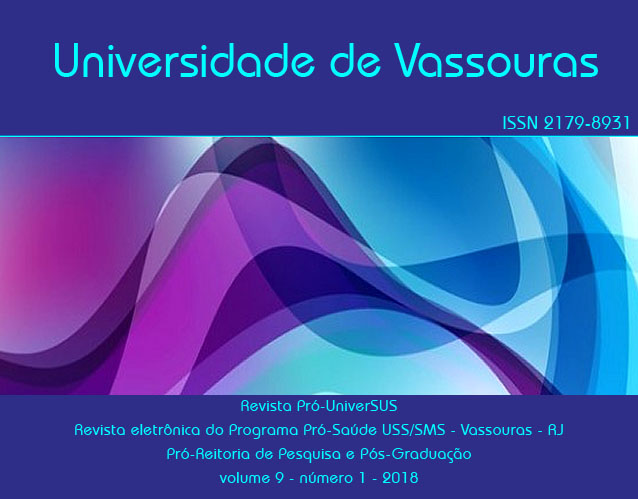Tratamento de paciente com má oclusão de classe I, apinhamento severo, supranumerário e sobremordida aumentada
Palavras-chave:
Apinhamento, Classe I Molar, Sobremordida, SupernumerárioResumo
As más oclusões são alterações na oclusão que ocorrem devido a anormalidades de forma e função dos tecidos moles, bases ósseas, dentes e articulação temporomandibular. O apinhamento dentário pode ser definido como uma discrepância entre o tamanho do dente e o tamanho do arco que leva à má oclusão. No presente artigo, descrevemos o tratamento de uma paciente do sexo feminino de 11 anos de idade, com má oclusão de classe I dentária e esqueletal de clase II, com apinhamento severo e discrepância de modelo de -9mm, com sobresaliência de 7mm e da sobremordida de 4mm, curva de Spee: 2,5 mm, desvio inferior da linha média de 1 mm para a direita, pró-inclinação de incisivos superiores e retro-inclinação de incisivos inferiores, incisivo inferior supernumerário, que foi tratado sem realizar extrações usando aparelhos fixos da filosofia MBT; realizando corretamente a mecânica e a seqüência desde que no final do tratamento os resultados esperados pelo clínico poderiam ser alcançados e a satisfação do paciente.
Downloads
Referências
Lazo Y, Peñalver S, Casamayor Z. Necesidad de tratamiento ortodóncico en estudiantes de preuniversitario. Rev Cub Med Mil. 2014; 43:3-10.
Hwang HS. Relationship of dental crowding to tooth size and arch width. Kor J Ortho D. 2004; 34: 488-96.
Konstantonis D, Anthopoulou C, Makou M. Extraction decision and identification of treatment predictors in Class I malocclusions.Prog Orthod 2013;14:47.
Erdinc AE, Nanda RS, Dandajena TC. Profile changes of patients treated with and without premolar extractions. Am J Orthod Dentofacial Orthop 2007;132:324-31.
Germec¸ D, Taner TU. Effects of extraction and nonextraction therapy with air-rotor stripping on facial esthetics in postadolescent borderline patients. Am J Orthod Dentofacial Orthop 2008;133: 539-49.
Konstantonis D. The impact of extraction vs nonextraction treatment on soft tissue changes in Class I borderline malocclusions. Angle Orthod 2012;82:209-17.
Van der Linden, F. Theoretical and practical aspects of crowding in the human dentition. J. Am. Dent. Assoc 1974; 89: 139-153.
Nanda R. Biomecánica en ortodoncia clínica. Médica Panamericana. 1998.
Kim E, Gianelly A. Extraction vs nonextraction: arch widths and smile esthetics. Angle Orthod 2003;73:354-8.
Luppanapornlarp S, Johnston LE Jr. The effects of premolarextraction: a long-term comparison of outcomes in “clear-cut” extraction and nonextraction Class II patients. Angle Orthod 1993;63:257-72.
Hagler B. Johnston L. Long-term comparison of extraction and nonextraction alternatives in matched samples of African American patients Am J Orthod 1998; 114: 393–403.
Tweed. C. H. Clinical Orthodontics.( 1 ed., 946p.) St. Louis: C. V. Mosby, 1966.
Creekmore T, Eklund M. The possibility of skeletal anchorage. J Clin Orthod 1983;17:266-9.
Josep m. Ustrell, Josep Duran Von Arx. Ortodoncia. Barcelona, edicions de la universitat de barcelona, Barcelona, ES, 2002.
Andrews LF. Straight Wire. The Concept and Appliance. L.A. San Diego, California, USA: Ed. Wells Co, 1989.137-57.
McNamara JA. Maxillary transverse deficiency. Am J Orthod Dentofacial Orthop 2000;117:567-70.
Polk E. Thirty years of faces The Tweed Profile 2007; 6: 3-4.
Tweed Ch. The Frankfort Mandibular Incisor Angle (FMIA) in Orthodontic Diagnosis, Treatment Planning and Prognosis Am J Orthod 1954; 24: 121-69.
Roth R. Functional occlusion for the orthodontist J Clin Orthod 1981; 15: 32-51.
Meyer AH, Woods MG, Manton DJ. Maxillary arch width and buccal corridor changes with orthodontic treatment. Part 1: differences between premolar extraction and nonextraction treatment outcomes. Am J Orthod Dentofacial Orthop 2014;145:207-16. 12.
Akyalcin S, Erdinc AE, Dincer B, Nanda RS. Do long-term changes in relative maxillary arch width affect buccal-corridor ratios in extraction and nonextraction treatment? Am J Orthod Dentofacial Orthop 2011;139:356-61.
Gianelly A. Arch width after extraction and nonextraction treatment. Am J Orthod Dentofacial Orthop 2003;123:25-8.
Germec¸-Cakan D, Taner TU, Akan S. Arch-width and perimeter changes in patients with borderline Class I malocclusion treated with extractions or without extractions with air-rotor stripping. Am J Orthod Dentofacial Orthop 2010;137:734-7.
Bishara SE, Bayati P, Zaher AR, Jakobsen JR. Comparisons of the dental arch changes in patients with Class II, division 1 malocclusions: extraction vs nonextraction treatments. Angle Orthod 1994; 64:351-8. 19.
Boley JC, Mark JA, Sachdeva RC, Buschang PH. Long-term stability of Class I premolar extraction treatment. Am J Orthod Dentofacial Orthop 2003;124:277-87.
Isik F, Sayinsu K, Nalbantgil D, Arun T. A comparative study of dental arch widths: extraction and non-extraction treatment. Eur J Orthod 2005;27:585-9.
Josgrilbert LF, Lacoski M, Kayatt FE, Tirloni P, Garcia IR, Garcia ID, et al. A influência do padrão de crescimento facial no tratamento ortopédico da má oclusão de Classe II. Rev Clín Ortodon Dental Press 2007; 6: 46-56.
Freitas JC. Má oclusão Classe II, divisão 1, de Angle com discrepância ântero-posterior acentuada. R Dental Press Ortodon Ortop Facial 2009; 14: 131-143. 16.
Bolton W. The clinical application of a tooth-size analysis Am J Orthod 1962; 48: 504–29.
Proffit W. Ortodoncia Teoría y Práctica 2002; Ed. Mosby Doyma Madrid, España.
Downloads
Publicado
Edição
Seção
Licença
Autores que publicam nesta revista concordam com os seguintes termos:
Autores mantém os direitos autorais e concedem à revista o direito de primeira publicação, com o artigo simultaneamente licenciado sob a Licença Creative Commons Creative Commons CC BY que permite o compartilhamento do trabalho com reconhecimento da autoria e publicação inicial nesta revista. Esta licença permite que outros distribuam, remixem, adaptem e criem a partir do seu trabalho, mesmo para fins comerciais, desde que lhe atribuam o devido crédito pela criação original. É a licença mais flexível de todas as licenças disponíveis. É recomendada para maximizar a disseminação e uso dos materiais licenciados.
Autores têm autorização para assumir contratos adicionais separadamente, para distribuição não-exclusiva da versão do trabalho publicada nesta revista (ex.: publicar em repositório institucional ou como capítulo de livro), com reconhecimento de autoria e publicação inicial nesta revista.
Ver o texto legal da licença em: https://creativecommons.org/licenses/by/4.0/














